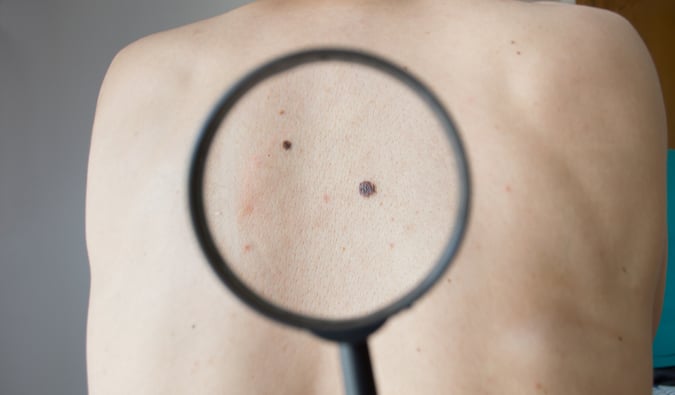Moles occur when skin cells called melanocytes grow in a cluster. After exposure to the sun, moles can darken to their final form, which is usually a small brown dot on the skin. While moles are often harmless, they can go through changes over time, eventually becoming cancerous. This is why it is important to visit your dermatologist regularly for a skin check. If an atypical mole is identified, it can be excised and tested to determine if the cells are abnormal or cancerous.
What is Atypical Mole Excision?
While moles are common and can occur on any area of the body, sometimes they may be abnormal. An atypical mole is distinguished by a number of features, including:
- A size greater than 6mm in diameter
- Color variation
- Indistinct borders
- Textured surface
- Asymmetry
If you notice a change in any of your moles or are concerned that a mole may be cancerous, it is important to schedule a skin cancer screen exam with your dermatologist. If an atypical mole is identified, it should be removed and tested for skin cancer.
Who is a Good Candidate for Atypical Mole Excision?
Individuals who notice a change in their mole may be able to benefit from atypical mole excision. The best way to identify an atypical mole is the look for the ABCs of melanoma. These include:
- Asymmetry: The two sides of the mole do not match.
- Border: The border of the mole is irregular or crooked.
- Color: The mole has multiple colors in it.
- Diameter: The width of the mole is more than 6mm in diameter.
- Evolution: The mole has changed in shape or size over time.
What to Expect During Atypical Mole Excision?
During atypical mole excision, your dermatologist will administer a numbing injection near the mole to ensure you are comfortable during treatment. Then a scalpel will be used to remove the mole and the surrounding skin. Stitches are used to close up the incision.
After the mole is removed, the sample will be sent to a laboratory to check for skin cancer. You should get the results in a couple of weeks. If the cells that make up the mole are healthy, no further treatment is necessary. If the cells appear abnormal or cancerous, your dermatologist will help you with the next steps.
Atypical Mole Excision Recovery
There is little to no downtime required following atypical mole excision. Most patients are able to return to work or school the next day, though you should avoid exercise for about a week. It is important to keep your incision site clean and covered to ensure that it heals correctly. This means that you should avoid swimming until your incision is completely healed. Be sure to follow your dermatologist’s recovery instructions to ensure a quick and easy healing process.
Schedule a Consultation
If you have noticed a suspicious-looking mole on your body or have been advised to remove an atypical mole, contact our office today to schedule your atypical mole excision consultation. We will be happy to answer any questions that you may have, as we want our patients to feel completely comfortable with their mole removal.

Get Started With A Visit!
Fill out the form below and we will reach out to you shortly to schedule an appointment.